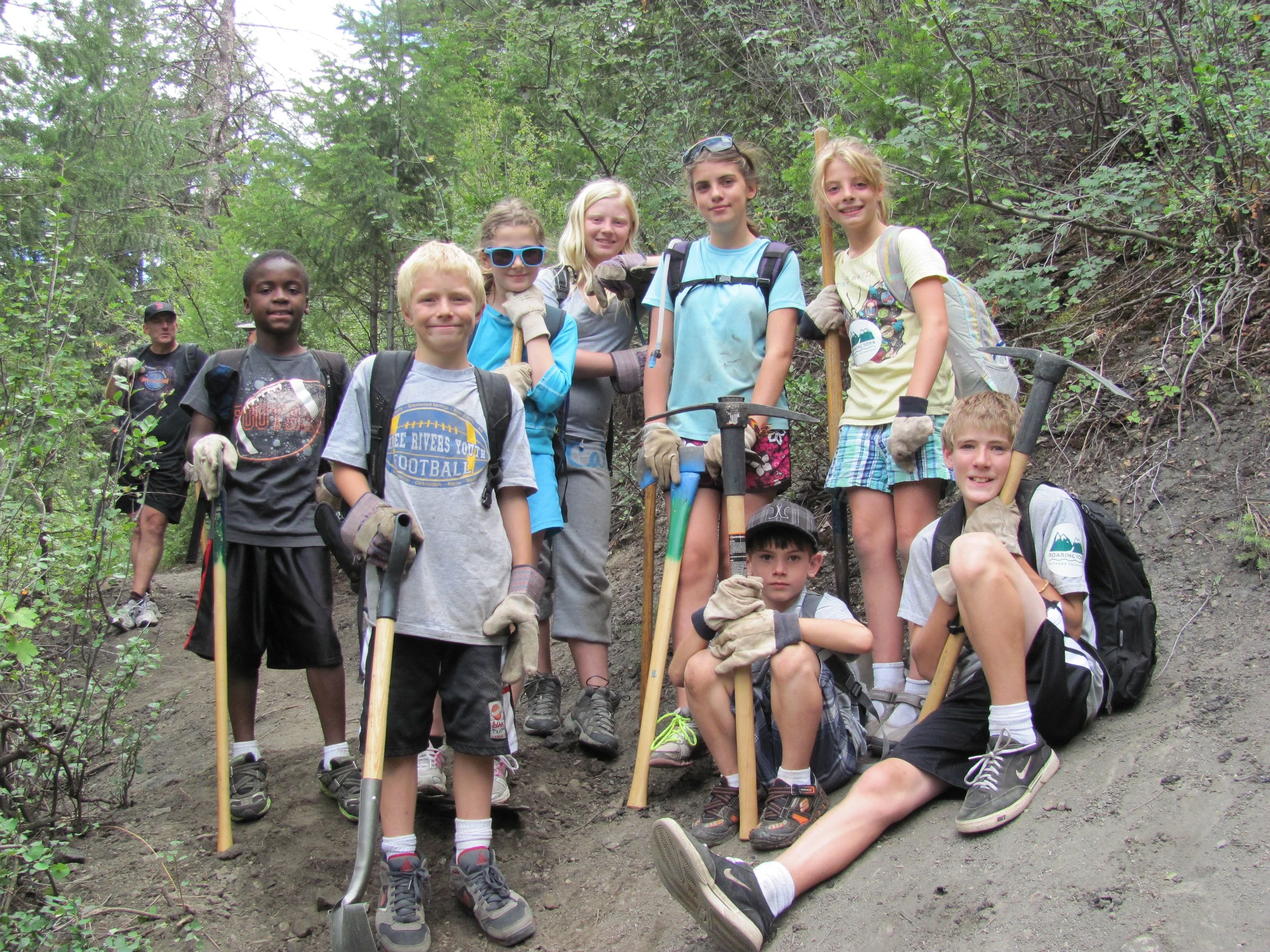By Becca Schild
From humble beginnings to a powerhouse of regional stewardship efforts . . .
In the late 1980s and early 1990s, the rise of mountain biking across Colorado began to overwhelm hiking trails, leading to damage and safety concerns. In 1992, Aspen bike mechanic Michael Hutton proposed a simple solution: host a volunteer trail work day on the Hunter Creek Trail. “It was the very first National Trails Day,” recalls Hutton, who still leads RFOV crews.
In 1993, Hutton, USFS ranger Dan Mathews, and outdoor enthusiasts David Hamilton and Kevin O’Brien—both veterans of Volunteers for Outdoor Colorado (VOC)—began planning a dedicated trail stewardship group for the Roaring Fork Valley. At the same time, the Basalt Trails Club, a group of local mountain bikers, had taken to maintaining trails themselves out of necessity. “If we wanted better trails, we realized we had to do the work,” says member Michael Thompson. The two efforts soon joined forces. RFOV’s first crew leader training took place on the Ruedi Overlook Trail, teaching sustainable trail-building techniques passed down from VOC.
In 1995, RFOV launched its first official community project on the Scout Trail in Glenwood Springs. Sixteen volunteers took part, and by the end of the season, three projects were completed with 105 participants.
Volunteers like Suzanne Wolff and Helen Carlsen were immediately drawn in. Wolff, a first-time trail worker, became a founding board member. Carlsen, who spotted a flier at a trailhead that read: “Do you use this trail? Join us next week to help us work on it!”, has now participated in hundreds of projects and remains deeply involved.
Suzanne Wolff | 2013
Helen Carlsen | Sky Mountain Park | 2024
In those early years, volunteers didn’t just build trails—they built the organization. Led by David Hamilton with just one part-time assistant, RFOV relied on dedicated community members to manage project selection, crew leader training, fundraising, and events. “There was no staff to thank us,” says longtime volunteer Jamin Heady-Smith. “We were the staff.”
Partnerships played a vital role from the beginning. Agencies like Pitkin County Open Space and Trails, the USFS, BLM, and Colorado Parks and Wildlife began turning to RFOV to help tackle a growing backlog of trail work and restoration projects. RFOV’s service area soon stretched from Aspen to Rifle, filling a critical gap in land management capacity.
In 2012, RFOV launched the Young Stewards Initiative to inspire the next generation of land stewards. The program’s success led to the hiring of RFOV’s first Youth Education Coordinator and laid the groundwork for future educational programs.
2025 Trail Crew | Geneva Lake Trail
A significant shift came in 2019 when founding director David Hamilton retired. Under new leadership from Ron Rash and current Executive Director Becca Schild, RFOV introduced a five-year strategic plan centered on four pillars: land, stewardship, community, and education. Project types expanded to include fire mitigation and ecological restoration. RFOV launched a new professional trail crew in 2022 to support the Forest Service in maintaining some of the most difficult to access trails in the Maroon Bells-Snowmass Wilderness.
Young Stewards | 2012
Youth engagement deepened with programs like Adventure Stewards, a week-long service and recreation camp, and Youth in Nature (YIN), a year-long high school leadership program. RFOV also launched Little Explorers, offering nature activities for young children while their parents volunteer. Today, youth are the fastest-growing segment of RFOV’s volunteers. Alongside these innovative programs, volunteer engagement continues to expand. In 2024, RFOV had the largest turnout of volunteers in its history, engaging 2,000 unique volunteers.
After 30 years, RFOV remains rooted in its founding belief: those who enjoy our shared outdoors can actively participate in their care. With thousands of volunteers, a proven track record of being a leader of public land stewardship, and a clear vision for the future, RFOV continues to connect people to public lands—through action, stewardship, and community.






